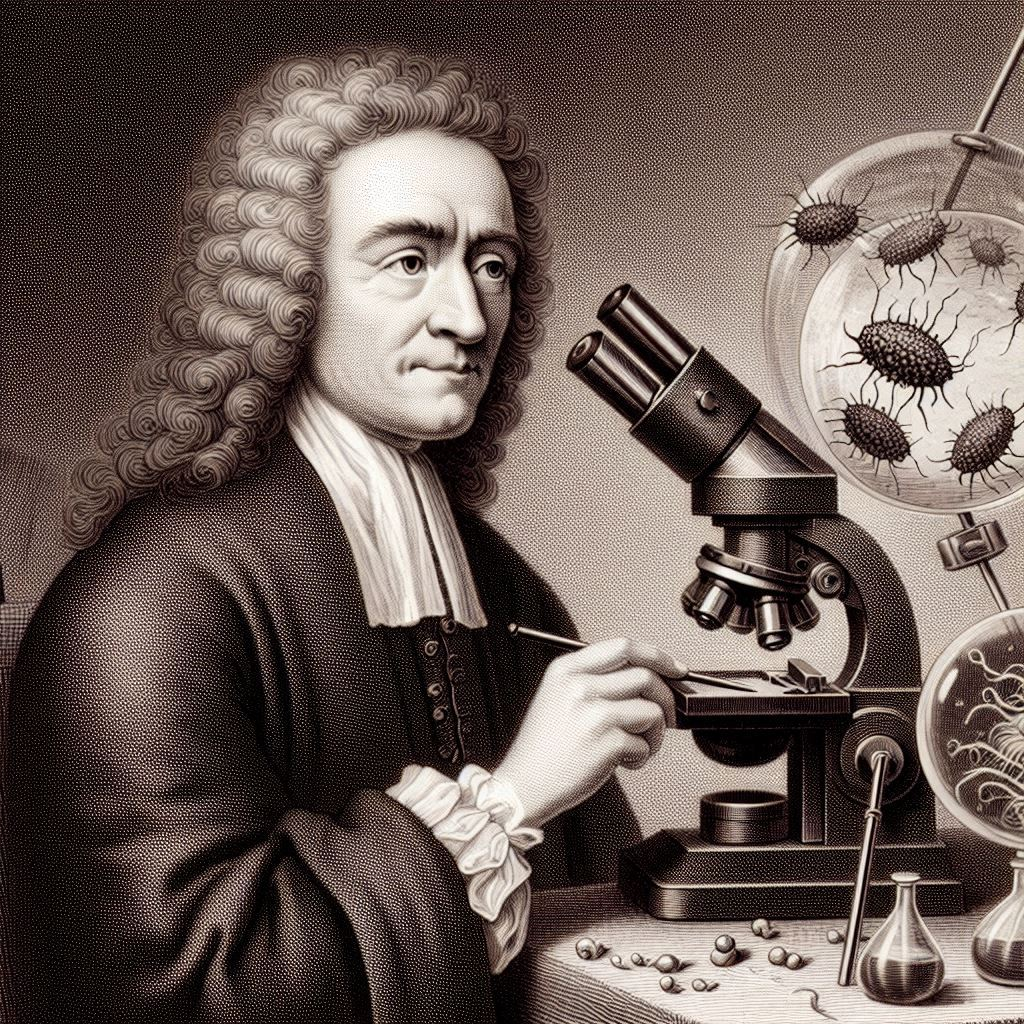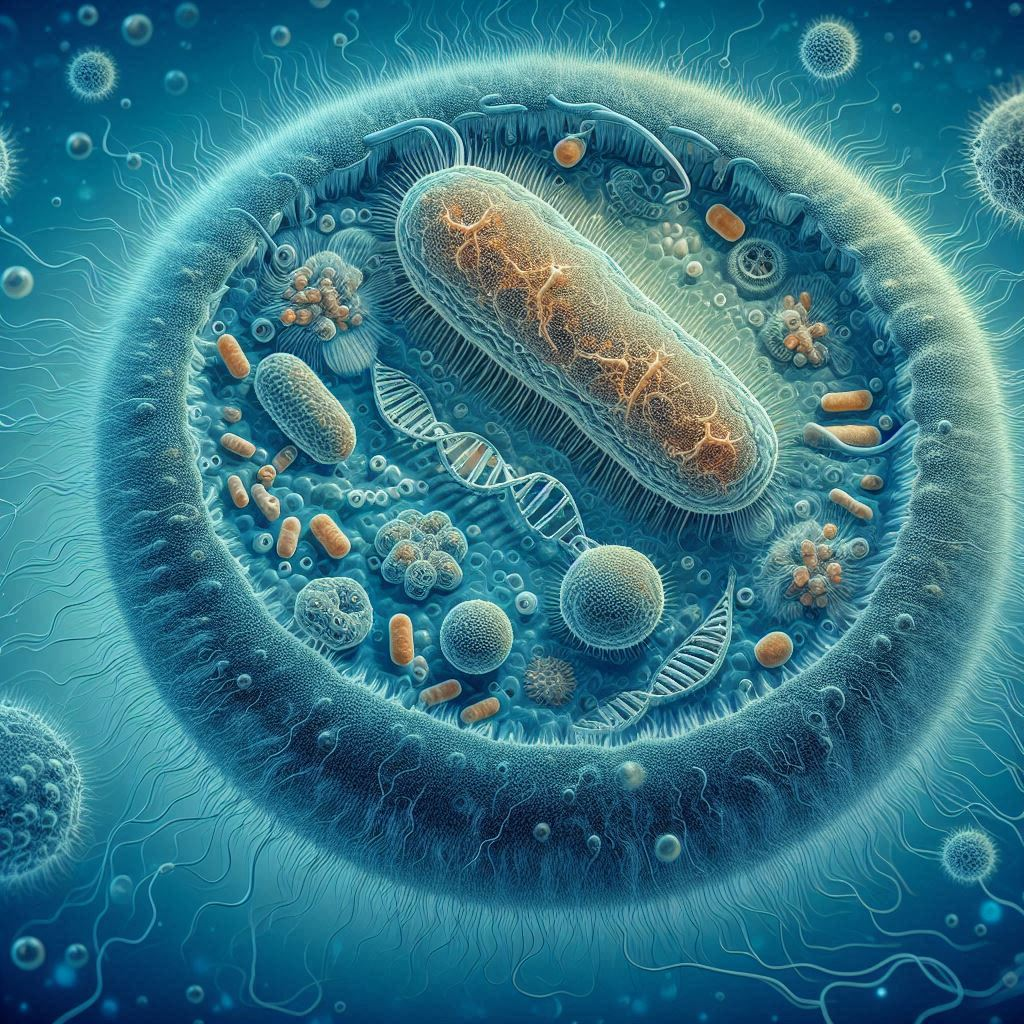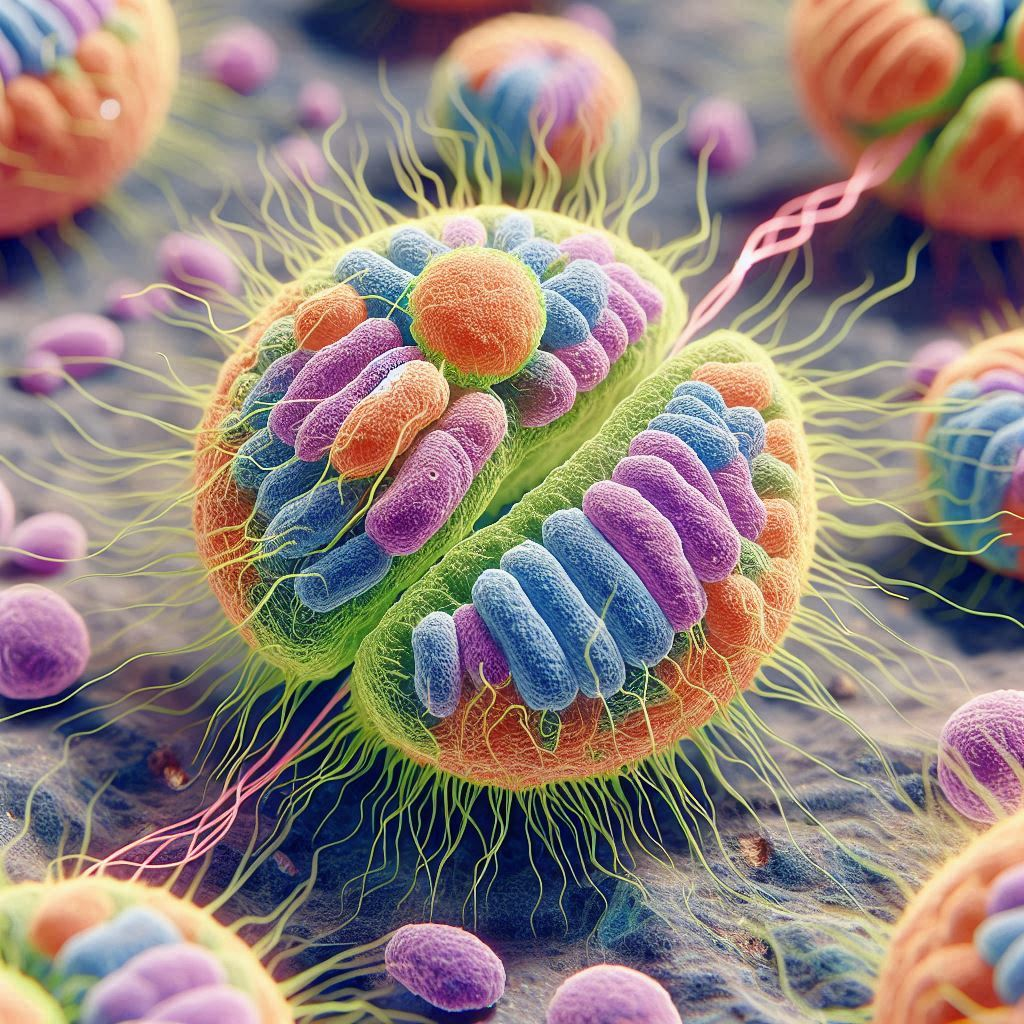What is a living cell?

Living Cell is a basic unit of life as a group of cell forms tissue and group of tissue forms organ and organs interacts with other organs which make organ system and leads to the existence of life in a living being.
Why the cell known as structural and functional unit of life?
The living cell is called the structural and functional unit of life because it is the fundamental building block of all living organisms. Here are some important reasons:
1. Structural Unit: Living cells are the smallest entities that can independently carry out the activities necessary for life. Each cell is enclosed by a cell membrane that separates its internal environment from the external environment. This membrane not only provides structural integrity but also regulates the flow of substances in and out of the cell, allowing the cell to maintain its internal conditions necessary for survival.
2. Functional Unit: Living cells perform all the essential functions required to sustain life. These functions include metabolism (chemical reactions that provide energy and build cellular components), growth and development, response to stimuli, reproduction, and maintaining homeostasis (the stable internal environment). Living Cells achieve these functions through the activities of various organelles and biochemical processes that occur within them.
3. Universal Presence: All living organisms, whether they are unicellular (composed of a single cell) or multicellular (composed of many cells), are made up of cells. Living cells are the basic units of structure and function in organisms ranging from simple bacteria to complex plants and animals. Each type of Living cell is specialized to perform specific tasks within the organism, contributing to the overall functioning and survival of the organism as a whole.
4. Evolutionary Basis: The concept of Living cells being the basic unit of life stems from the theory of evolution and the idea that all living organisms share a common ancestor. Living cells have evolved over billions of years to adapt to different environments and challenges, resulting in the diversity of life forms we see today. The principles of cell biology provide insights into how organisms function, develop, and interact with their environments.
History and discovery of cell

1. Robert Hooke (1635-1703):
- In 1665, Robert Hooke, an English scientist, used a microscope to examine thin slices of cork (from oak tree bark) and observed tiny, box-like structures that he called “cells” (Latin for “small rooms”). Although these were actually the cell walls of dead plant cells, Hooke’s observations marked the first recorded description of cells.
2. Antonie van Leeuwenhoek (1632-1723):
- A Dutch scientist, Antonie van Leeuwenhoek, is known as the father of microbiology. Between 1674 and 1683, he constructed powerful microscopes and made detailed observations of microscopic organisms, including bacteria and protists, as well as human red blood cells. His work provided further evidence for the existence of cells and advanced the field of microbiology.
3. Matthias Schleiden (1804-1881) and Theodor Schwann (1810-1882):
- In the 1830s, Matthias Schleiden, a German botanist, and Theodor Schwann, a German physiologist, formulated the cell theory based on their independent research. Schleiden concluded that all plants are composed of cells, while Schwann extended this idea to animals. Together, they proposed that cells are the basic units of structure and function in all living organisms.
4. Rudolf Virchow (1821-1902):
- Building upon the work of Schleiden and Schwann, Rudolf Virchow, a German pathologist and biologist, further contributed to the cell theory in 1855. He stated that all cells arise from pre-existing cells, challenging the idea of spontaneous generation and reinforcing the concept of cellular continuity and reproduction.
Cell theory
In the 1830s, Matthias Schleiden, a German botanist, and Theodor Schwann, a German physiologist, formulated the cell theory based on their independent research.
1. All living organisms are composed of cells:
- This principle asserts that all living things, from the smallest bacteria to the largest mammals, are made up of one or more cells. Cells are the structural building blocks of life.
2. The cell is the structural and functional unit of life:
- Cells are the smallest units capable of carrying out the functions necessary for life. They perform activities such as metabolism, reproduction, response to stimuli, and growth.
3. Cells arise from pre-existing cells through cell division:
- According to this principle, cells can only arise from pre-existing cells through processes like cell division (such as mitosis in somatic cells or meiosis in reproductive cells). This concept was proposed by Rudolf Virchow in the 19th century to refute the idea of spontaneous generation.
Types

- Prokaryotic Cells:
- Structure: Prokaryotic cells are simpler in structure compared to eukaryotic cells. They lack membrane-bound organelles, including a nucleus.
- Genetic Material: The genetic material (DNA) in prokaryotic cells is typically found in a single circular chromosome located in the nucleoid region, not enclosed within a nucleus.
- Examples: Bacteria and archaea are examples of organisms composed of prokaryotic cells.
- Features: Prokaryotic cells are typically smaller in size and have a cell wall made of peptidoglycan in bacteria (not present in archaea). They may also have additional features like flagella for movement and pili for adherence.
2. Eukaryotic Cells:

- Structure: Eukaryotic cells are more complex and larger compared to prokaryotic cells. They contain membrane-bound organelles, including a nucleus that houses the genetic material.
- Genetic Material: DNA in eukaryotic cells is organized into multiple linear chromosomes located within the nucleus.
- Examples: Plants, animals, fungi, and protists are examples of organisms composed of eukaryotic cells.
- Features: Eukaryotic cells have a variety of membrane-bound organelles such as mitochondria (for energy production), endoplasmic reticulum (for protein synthesis), Golgi apparatus (for processing and packaging proteins), chloroplasts (in plants, for photosynthesis), and lysosomes (for digestion). They may also have a cytoskeleton for structural support and transport within the cell.
Within these broad categories, there are further specialized types of cells that perform specific functions within multicellular organisms. These specialized cells include:
- Muscle Cells: Specialized for contraction and movement in animals.
- Neurons: Specialized for transmitting electrical signals in the nervous system.
- Epithelial Cells: Forming protective barriers and linings in tissues and organs.
- Red Blood Cells: Specialized for transporting oxygen in the bloodstream.
- Guard Cells: Found in plants, specialized for regulating gas exchange and water balance.
Functions
Living cells perform a wide array of functions that are essential for the survival, growth, and reproduction of organisms. These functions can be broadly categorized into several key processes:
1. Metabolism: Living cells carry out various metabolic activities to obtain energy and synthesize molecules necessary for cellular functions. This includes:
- Energy Production: Through processes like cellular respiration (involving the mitochondria) or photosynthesis (in plants and algae).
- Synthesis of Biomolecules: Living cells synthesize proteins, lipids, carbohydrates, and nucleic acids needed for growth, repair, and maintenance.
2. Transport: Living cells regulate the movement of molecules into and out of the cell to maintain internal balance (homeostasis) and exchange materials with the environment. This occurs through processes like:
- Transport Across Membranes: Via passive diffusion, facilitated diffusion, active transport, and endocytosis/exocytosis.

3. Communication: Living cells communicate with each other and respond to signals from their environment through various mechanisms:
- Cell Signaling: Using chemical signals (such as hormones, neurotransmitters) that trigger responses within the cell.
- Cell Junctions: Forming connections with neighboring cells (like gap junctions in animal cells or plasmodesmata in plant cells) for direct communication.
4. Movement: Living cells can move themselves or move materials within themselves, which is crucial for various physiological processes:
- Cytoskeleton Dynamics: Involving actin filaments, microtubules, and intermediate filaments that provide structure and allow movement within the cell.
- Cell Locomotion: For example, in immune cells, muscle cells, or during development.
5. Defense and Protection: Living cells play roles in defending the organism against pathogens and other threats:
- Immune Response: Involving specialized cells like white blood cells that recognize and destroy pathogens.
- Barrier Function: Such as the skin cells providing a physical barrier against pathogens and environmental stresses.

6. Reproduction and Growth: Living cells reproduce to enable growth, repair damaged tissues, and replace old or dying cells:
- Cell Division: Through processes like mitosis (for growth and tissue repair) and meiosis (for sexual reproduction in organisms).
- Cell Differentiation: Where cells become specialized for specific functions during development.
7. Regulation and Homeostasis: Living cells maintain a stable internal environment (homeostasis) through regulatory mechanisms:
- Feedback Systems: Controlling factors like temperature, pH, and ion concentrations to ensure optimal cellular function.
- Gene Expression Regulation: Controlling when and how genes are activated to produce specific proteins or respond to environmental changes.
Cell organelles
Nucleus:
- Function: The nucleus houses the cell’s genetic material (DNA) in the form of chromosomes. Through the regulation of DNA replication and gene expression, it controls cellular functions.
- Structure: Surrounded by a double membrane called the nuclear envelope, which contains pores for the movement of molecules.
Mitochondria:

- Function: Mitochondria are often called the powerhouse of the cell because they generate ATP (adenosine triphosphate), the primary energy currency of cells, through cellular respiration.
- Structure: They have a double membrane structure with inner folds called cristae, where ATP synthesis occurs.
Endoplasmic Reticulum (ER):
- Function: The ER plays a key role in protein synthesis, folding, and transport. It also participates in lipid synthesis and detoxification of drugs and toxins.
- Structure: Divided into rough ER (studded with ribosomes for protein synthesis) and smooth ER (lacks ribosomes and is involved in lipid metabolism and detoxification).
Golgi Apparatus:
- Function: The Golgi apparatus processes, sorts, and packages proteins and lipids synthesized in the ER for transport to their final destinations inside or outside the cell.
- Structure: Consists of flattened membrane-bound sacs called cisternae.
Lysosomes:
- Function: Lysosomes are membrane-bound vesicles containing digestive enzymes that break down macromolecules, worn-out organelles, and pathogens.
- Structure: Formed by the fusion of vesicles containing enzymes from the Golgi apparatus.
Vacuoles (in plants) / Vesicles (in animals):
- Function: Vacuoles and vesicles are membrane-bound sacs involved in storage, transportation of substances, and maintaining turgor pressure (in plants).
- Structure: Vacuoles in plants are larger and filled with water, while vesicles in animals are smaller and more diverse in function.
Chloroplasts (in plant cells):

- Function: Chloroplasts are organelles responsible for photosynthesis, converting light energy into chemical energy (glucose) using chlorophyll and other pigments.
- Structure: Have a double membrane structure with stacks of thylakoids (where photosynthesis occurs) and a fluid-filled stroma.
Cytoskeleton:
- Function: The cytoskeleton provides structural support, maintains cell shape, and facilitates cell movement and transport of organelles.
- Components: Includes microtubules (hollow tubes), microfilaments (solid rods), and intermediate filaments (provide mechanical strength).
Centrioles (in animal cells):
- Function: Centrioles are involved in organizing microtubules during cell division (mitosis and meiosis).
- Structure: Pair of cylindrical structures composed of microtubules arranged in a specific pattern.
Cell division
Cell division is the process by which a parent cell divides into two or more daughter cells. This fundamental process is essential for growth, development, and maintenance of organisms. There are two main types of cell division: mitosis and meiosis, each serving distinct purposes in different organisms:

- Mitosis:
- Purpose: Mitosis is a type of cell division that produces two genetically identical daughter cells from a single parent cell. It plays a crucial role in growth, repair, and asexual reproduction in organisms.
- Stages: Mitosis is divided into several stages: prophase, metaphase, anaphase, and telophase, followed by cytokinesis (division of the cytoplasm).
- Function: During mitosis, the genetic material (chromosomes) is replicated and evenly distributed to ensure each daughter cell receives a complete set of chromosomes identical to the parent cell.
- Meiosis:
- Purpose: Meiosis is a specialized type of cell division that occurs in sexually reproducing organisms to produce gametes (sperm and egg cells).
- Stages: Meiosis involves two sequential divisions (meiosis I and meiosis II), each with prophase, metaphase, anaphase, and telophase stages, followed by cytokinesis.
- Function: Meiosis reduces the chromosome number by half in the daughter cells, ensuring that when gametes (sperm and egg cells) fuse during fertilization, the resulting zygote has the correct chromosome number (diploid).
Key points about cell division:
- Regulation: Cell division is tightly regulated to ensure proper growth, repair, and reproduction. Regulatory checkpoints monitor the cell cycle and ensure that cells proceed through division only when conditions are favorable and DNA is intact.
- Importance: Cell division is essential for tissue renewal and repair in multicellular organisms. It allows organisms to grow from a single fertilized egg cell and to replace damaged or old cells with new ones.
- Mutations: Errors in cell division, such as mutations or abnormalities in chromosome segregation, can lead to genetic disorders, cancer, or developmental abnormalities.

FAQ (frequently asked questions)
1. What is a cell?
- A Living cell is the basic structural and functional unit of life. It is the smallest unit of an organism that can independently carry out all the processes of life, such as metabolism, growth, and reproduction.
2. What are the different types of cells?
- Living cells can be broadly categorized into two types: prokaryotic cells (e.g., bacteria) and eukaryotic cells (e.g., plant and animal cells). Prokaryotic cells lack a membrane-bound nucleus and other organelles, while eukaryotic cells have a nucleus and organelles enclosed within membranes.
3. What are organelles?
- Organelles are specialized cell structures with particular purposes. Examples include the nucleus (which houses DNA), mitochondria (involved in energy production), chloroplasts (in plants, involved in photosynthesis), and the endoplasmic reticulum (involved in protein synthesis and transport).
4. What are the function of DNA in a cell?
- DNA (deoxyribonucleic acid) contains the genetic information that determines the structure and function of cells. It serves as a blueprint for making proteins and is passed on from parent cells to daughter cells during cell division.
5. How do cells obtain energy?
- Living cells obtain energy through processes like cellular respiration (involving the breakdown of glucose to produce ATP) or photosynthesis (in plants and algae, using sunlight to convert carbon dioxide and water into glucose and oxygen).
6. What is the difference between mitosis and meiosis?
- Mitosis is a type of cell division that produces two identical daughter cells, used for growth, repair, and asexual reproduction. Meiosis is a specialized type of cell division that produces gametes (sperm and egg cells) in sexually reproducing organisms, reducing the chromosome number by half.
7. How do cells communicate with each other?
- Living cells communicate through chemical signals, such as hormones, neurotransmitters, and growth factors. They also communicate directly via cell-cell junctions (like gap junctions in animal cells or plasmodesmata in plant cells) that allow for the exchange of molecules and signals.
8. What is homeostasis, and why is it important for cells?
- Homeostasis is the maintenance of stable internal conditions within an organism. Cells regulate factors like temperature, pH, and ion concentrations to ensure optimal conditions for biochemical reactions and cellular functions.
9. What role do cells play in the immune system?
- Cells such as white blood cells (leukocytes) are key components of the immune system. They detect and destroy pathogens (microorganisms that cause disease), produce antibodies, and coordinate immune responses to protect the organism from infections.
10. How do cells differentiate and specialize in multicellular organisms?
- During development, cells undergo differentiation, where they become specialized for specific functions. This specialization allows cells to form tissues, organs, and organ systems, each performing distinct roles that contribute to the overall function and survival of the organism.
Conclusion
In conclusion, Living cells are the fundamental units of life, performing essential functions that sustain organisms from the simplest bacteria to complex multicellular beings. Living cells are responsible for processes such as metabolism, reproduction, communication, and defense, all of which contribute to the organism’s survival and adaptation to its environment.
Table of Contents
Read more about living Cell
Go and visit dusearchit.in and get more knowledge about others topics.
